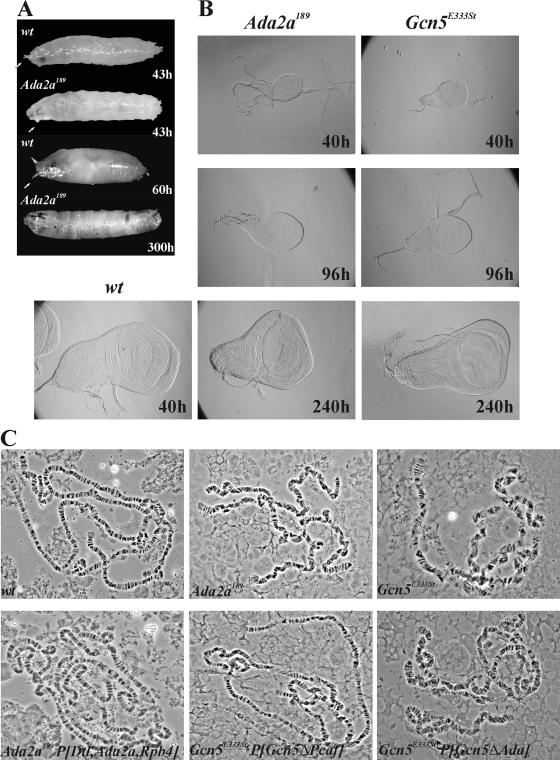FIG. 2.
dAda2a and dGcn5 mutants display phenotypes indicating developmental defects. (A) dAda2a189 mutants fail to pupariate or form malformed pupae. Third-instar dAda2a189 larvae reach sizes similar to those of their wild-type (wt) siblings but do not start wandering and fail to evert spiracles (arrows), and only after 8 to 10 days in L3 do some of them form primitive pupa-like structures covered with brownish cuticle. (B) Imaginal discs of dAda2a189 and dGcn5E333st third-instar larvae are underdeveloped compared with similarly aged wild-type controls. During their extended L3 stage, the imaginal discs of dAda2a and dGcn5 mutants grow and reach the size of the fully developed wild-type discs after 8 to 10 days of L2/L3 molting, but they are abnormal in regards to both their shape and their structure. (C) Polytene chromosomes of dAda2a189 and dGcn5E333st mutants display similarly abnormal structures with respect to reduced condensation, short arms, and distorted banding pattern. Wild-type (wt) dAda2a and dGcn5 transgenes or a Gcn5 transgene lacking the PCAF region restores the normal chromosome structure of the corresponding mutants, while dGcn5 transgenes with a deletion in the ADA-interacting region or in the HAT domain fail in the rescue.

